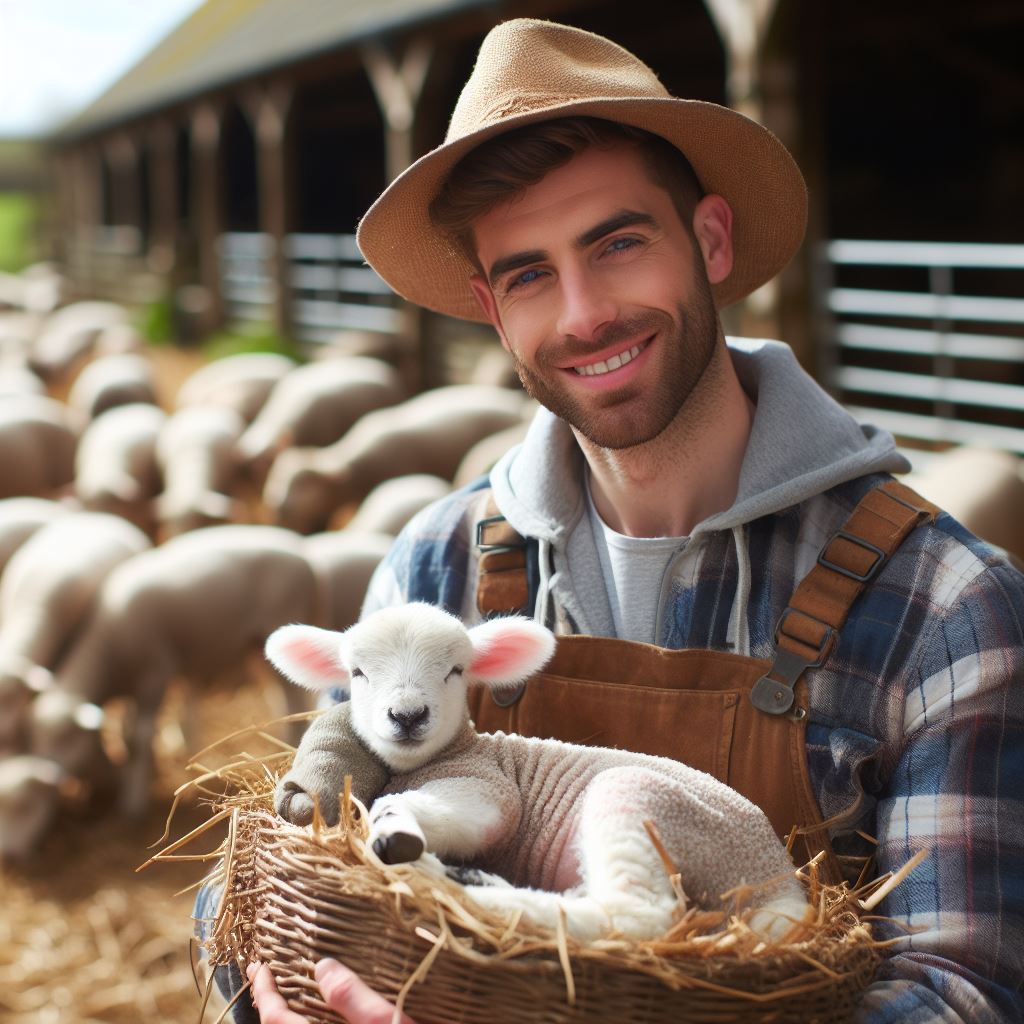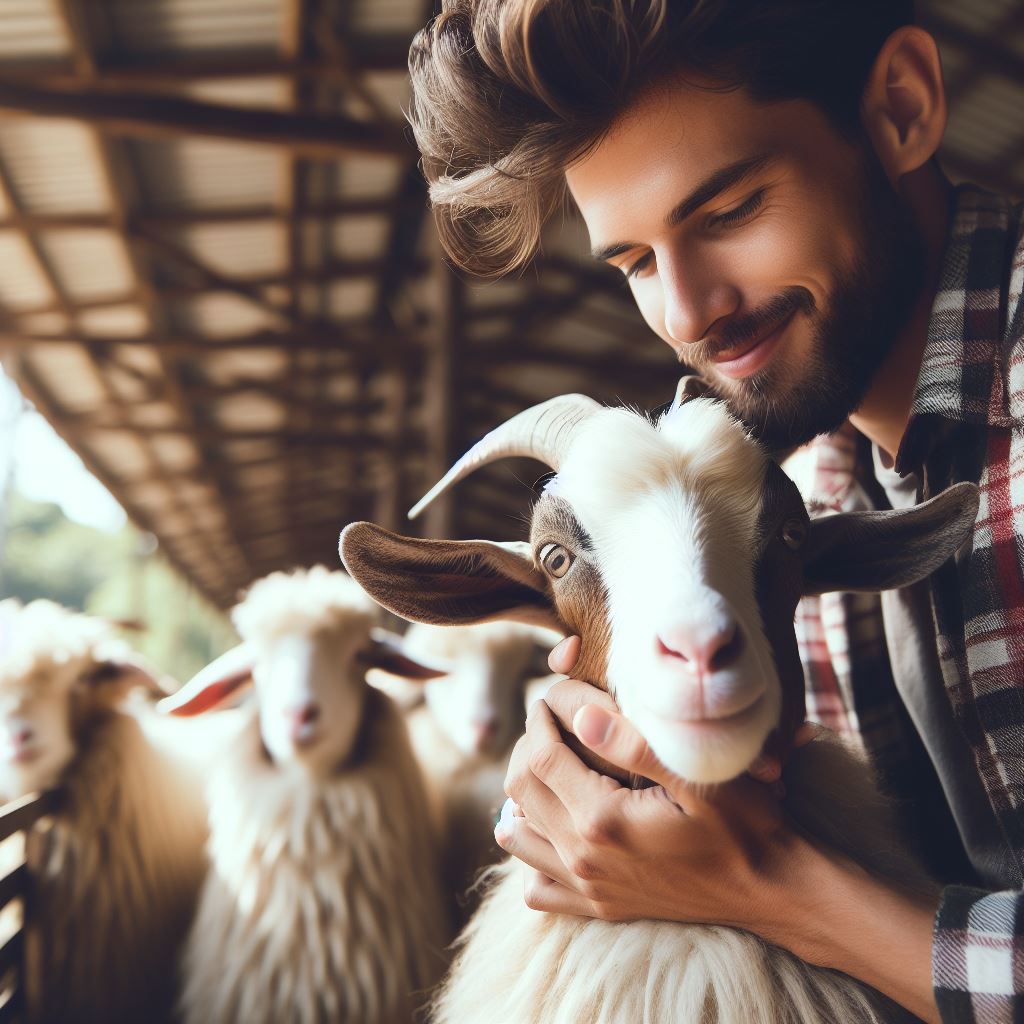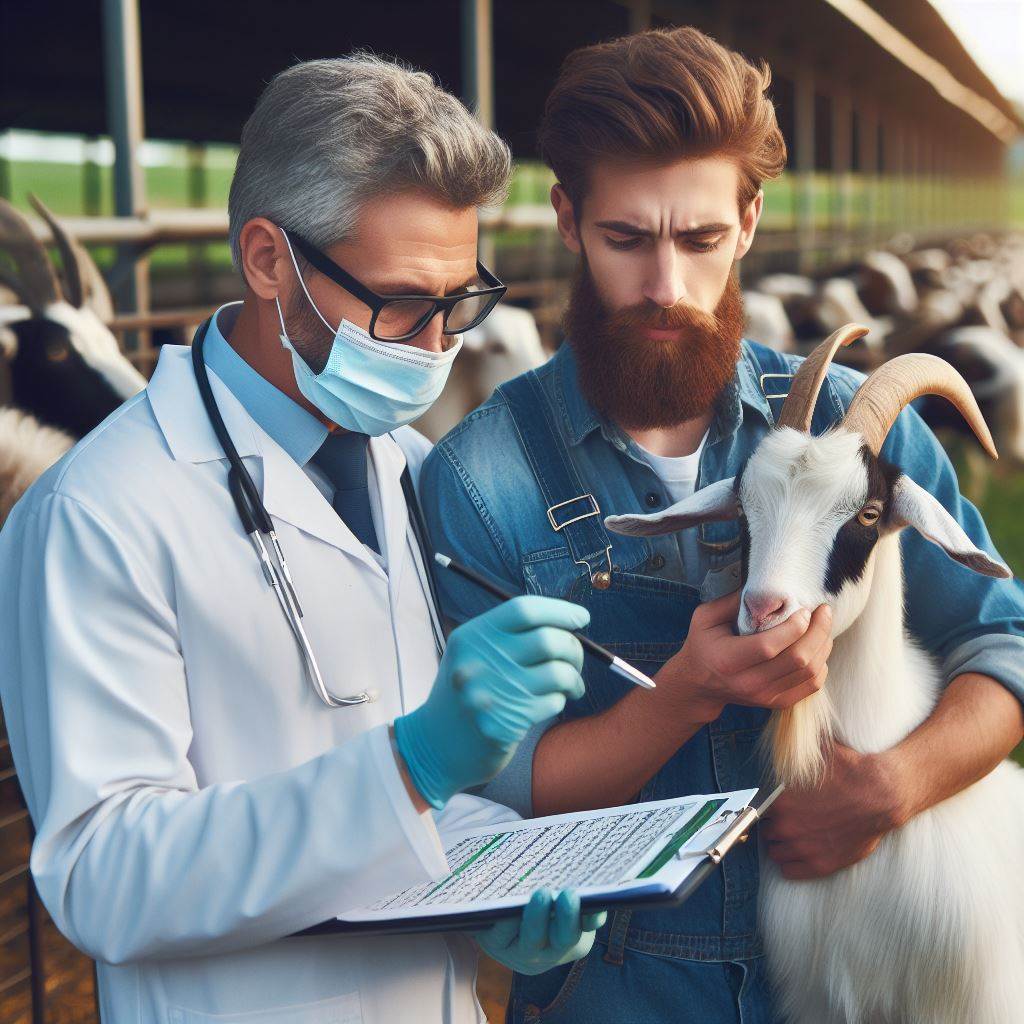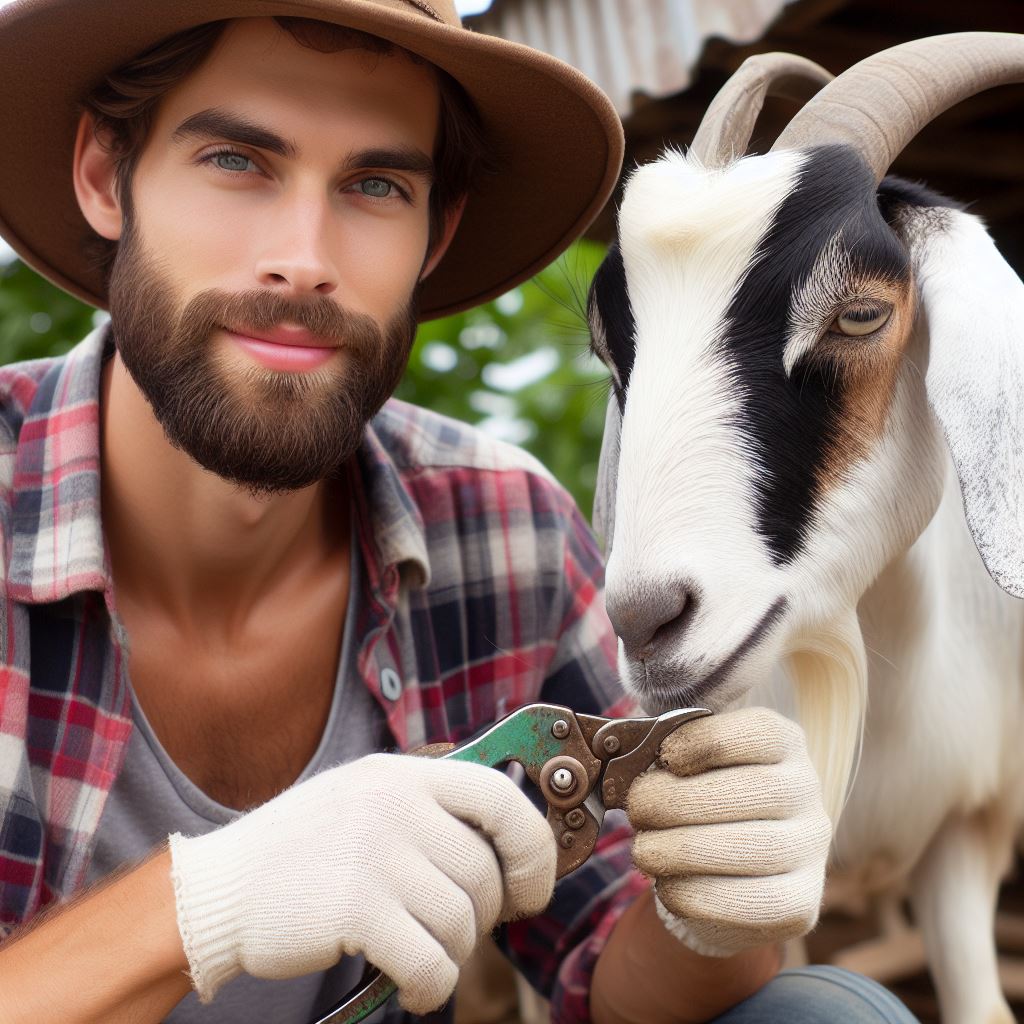Introduction
Proper lambing practices are crucial for the health and well-being of sheep.
Proper lambing practices
This lambing guide blog post aims to provide essential information and tips.
Timely assistance during lambing reduces mortality rates, ensuring the health of both ewes and lambs.
Adequate nutrition, sanitary conditions, and vigilant monitoring contribute to successful lambing, promoting a thriving flock and sustainable farming practices.
Overview of the content to be covered
In this blogpost, we will cover the importance of preparedness, necessary equipment, and potential complications.
Importance of preparedness
Proper preparations ensure a smooth lambing process and reduce stress on both ewes and lambs.
Necessary equipment
Essential tools include lambing pens, colostrum supplements, obstetric chains, and a lambing kit.
Potential complications
Common challenges during lambing include dystocia, hypothermia, and inadequate colostrum intake.
Signs of imminent lambing
Indications include restlessness, udder enlargement, and the presence of vulval discharge.
Lambing process
Active observation, assistance when needed, and the removal of membranes are key during lambing.
Care of newborn lambs
Ensure the lamb bonds with the ewe, monitor suckling, and provide warmth and shelter.
Post-lambing care for ewes
Offer nutritious feed, monitor health, and provide a clean and comfortable environment for recovery.
Dealing with complications
Be prepared to handle emergencies such as prolapse, weak lambs, and lameness promptly.
Finally, Following proper lambing practices is essential for the successful rearing of healthy and thriving lambs.
Remember: Preparation, vigilance, and knowledge are the keys to a successful lambing season.
Transform Your Agribusiness
Unlock your farm's potential with expert advice tailored to your needs. Get actionable steps that drive real results.
Get StartedUnderstanding the lambing process
Definition of lambing
Lambing is the process in which a female sheep, also known as an ewe, gives birth to one or more lambs.
Explanation of the stages of labor
- Stage 1: Pre-labor – The ewe may appear restless, paw the ground, and separate from the flock.
- Stage 2: Active labor – The ewe begins to have contractions and her cervix dilates to allow the passage of the lambs.
- Stage 3: Expulsion of the placenta – The ewe delivers the placenta after giving birth to the lambs.
Common signs of approaching labor
- Swelling and relaxation of the vulva – The ewe’s vulva becomes enlarged and relaxed as labor approaches.
- Nesting behavior – The ewe may paw or scrape the ground to create a nest for giving birth.
- Separation from the flock – Ewes often isolate themselves from the rest of the flock when they are close to lambing.
- Increased restlessness – Ewes may exhibit signs of restlessness due to the discomfort of labor.
- Frequent lying down and standing up – Ewes in labor may repeatedly lie down and stand up, trying to find a comfortable position.
Importance of monitoring the ewe during lambing
- Early intervention – Timely monitoring allows for early detection of any complications during the lambing process.
- Assisting with difficult births – If a lamb is stuck or the ewe is having difficulty delivering, intervention may be required.
- Ensuring the safety and well-being of the ewe and lambs – Monitoring allows for immediate attention to any potential health issues.
- Identifying and addressing post-lambing complications – Post-lambing complications such as uterine infections can be addressed promptly with monitoring.
By understanding the lambing process, sheep owners can ensure the well-being of their ewes and lambs.
Following best practices during this crucial time can greatly improve the success and survival rates of lambs.
Preparing for lambing season
Selection of appropriate lambing facilities
During the lambing season, it is important to provide appropriate facilities for the ewes to give birth comfortably and safely.
Here are some key considerations when selecting lambing facilities:
- Adequate space: Ensure that the lambing area has enough space for the ewes to move around freely and for the lambs to stand and nurse.
- Clean and well-ventilated environment: Maintain a clean and well-ventilated lambing area to minimize the risk of infections and respiratory issues.
- Separate pens: Create separate pens for ewes close to lambing to ensure individual attention and prevent any potential bullying by other ewes.
- Easy access to water and feed: Keep water and feed accessible to the ewes throughout the lambing process to support their nutritional needs.
Proper nutrition for pregnant ewes
Providing proper nutrition to pregnant ewes is crucial to support their health and the development of healthy lambs.
Here are some guidelines for their diet:
- Balanced diet: Make sure the ewes receive a balanced diet consisting of high-quality forage, grains, and minerals to meet their nutritional requirements.
- Adequate energy and protein: Increase the energy and protein levels in the diet during the last 6-8 weeks of gestation to support proper fetal growth.
- Mineral supplementation: Provide mineral supplementation, especially calcium and phosphorus, to prevent deficiencies and promote strong bones in the lambs.
- Monitor body condition: Regularly assess the body condition of the ewes and adjust their diet accordingly to prevent under or overfeeding.
Vaccination schedule for ewes before lambing
Immunizing the ewes before lambing is essential to protect them and their newborn lambs from contagious diseases.
Follow this vaccination schedule:
- Consult a veterinarian: Seek advice from a veterinarian to determine the appropriate vaccinations for your ewes based on local disease risks.
- Schedule vaccinations in advance: Administer vaccines at least 4-6 weeks before the expected lambing date to ensure adequate immunity transfer to the lambs.
- Core vaccinations: Ensure that ewes receive core vaccinations, including those for clostridial diseases like tetanus and enterotoxemia.
- Additional vaccinations: Consider additional vaccinations based on specific regional diseases, such as Chlamydia and leptospirosis.
Nesting materials and lambing kit essentials
Preparing a lambing kit and providing appropriate nesting materials are essential for a smooth lambing process.
Here are the essentials:
- Clean bedding: Use clean straw or wood shavings to create a comfortable and hygienic nesting area for the ewes.
- Lambing kit: Assemble a lambing kit containing necessary supplies such as lubricant, clean towels, iodine solution, and a thermometer.
- Heat lamps or warm box: Provide an additional heat source, like heat lamps or a warm box, to keep the lambs warm during cold weather conditions.
- Emergency contact information: Keep important contact numbers, including your veterinarian, readily available in case of any birthing complications.
By following these best practices in lambing preparation, you can ensure the well-being of both the ewes and the lambs.
Remember, a comfortable and stress-free lambing environment promotes optimal health and productivity.
Read: Sheep Health Care Basics for Farmers
Assisting during the lambing process
Recognizing when assistance is necessary
During lambing, it is crucial to be able to identify when a ewe requires assistance.
This can usually be determined by observing the following signs: prolonged labor, straining with no progress, or a weak or dead lamb partially delivered.
Proper techniques for assisting in lamb delivery
When assisting in lamb delivery, it is important to maintain cleanliness and follow these proper techniques:
- Wash hands thoroughly and wear disposable gloves.
- Apply a sterile obstetric lubricant to your hands and forearms.
- Gently guide the lamb in a downward motion, following the natural direction of the birth canal.
- Avoid pulling forcefully on the lamb, as this may lead to injury.
- Untangle any umbilical cords around the lamb’s neck to ensure proper breathing.
Handling weak or premature lambs
Weak or premature lambs require special attention and care to improve their chances of survival:
- Dry the lamb with clean towels and provide a warm environment.
- Administer colostrum using a bottle or tube within the first hour of birth.
- Monitor the lamb’s temperature and ensure it stays within the normal range.
- Offer supplemental feeding if necessary, based on the advice of a veterinarian.
Special considerations for multiple births
When dealing with multiple births, extra precautions and monitoring are necessary:
- Ensure each lamb receives adequate colostrum within the first few hours of birth.
- Check for any signs of rejection or neglect by the ewe towards any of her lambs.
- Separate weaker or rejected lambs and provide necessary care.
- Regularly monitor the weight gain and overall health of each lamb to detect any issues early on.
Lambing can be a stressful and challenging process, but with proper assistance, the chances of successful deliveries and healthy lambs increase significantly.
Always be observant and ready to lend a helping hand when necessary.
Remember, prompt action combined with a gentle approach will greatly contribute to the well-being and survival of both the ewe and her lambs.
Read: Fencing Solutions for Sheep and Goats
Caring for the newborn lambs
As a shepherd, your responsibilities do not end after successfully assisting in the lambing process.
Showcase Your Farming Business
Publish your professional farming services profile on our blog for a one-time fee of $200 and reach a dedicated audience of farmers and agribusiness owners.
Publish Your ProfileCaring for the newborn lambs is crucial to ensure their health and vitality.
In this section, we will discuss some best practices to follow:
Assessing lamb health and vitality
The first step in caring for newborn lambs is to assess their health and ensure their vitality.
A healthy lamb should be active, with bright eyes and a strong suckling reflex.
Check for any signs of weakness or lethargy.
- Observe their breathing to ensure it is normal and without distress.
- Inspect their coat for any signs of infection or parasites.
- Assess their overall body condition, looking for signs of malnourishment or dehydration.
- If you notice any abnormalities or concerns, consult a veterinarian immediately.
Importance of colostrum intake
Colostrum, the first milk produced by the ewe, is crucial for the lamb’s survival and development.
It is rich in essential nutrients and antibodies that help them fight off infections.
Ensure the lamb receives colostrum within the first few hours after birth:
- Allow the lamb to suckle naturally from its mother if possible.
- If the lamb is unable to nurse or the ewe rejects it, milk the ewe and bottle-feed the lamb.
- Use a clean bottle and teat, making sure the lamb receives an adequate amount of colostrum.
- Monitor the lamb’s feeding and make sure it receives enough nourishment during its first 24 hours.
Navel disinfection and marking lambs
Proper navel disinfection is essential to prevent infection in newborn lambs. Immediately after birth, disinfect the lamb’s navel using an antiseptic solution:
- Prepare a diluted antiseptic solution according to the manufacturer’s instructions.
- Gently clean the navel area, ensuring you cover the entire stump.
- Allow the navel to dry naturally and avoid using any abrasive substances.
- Additionally, consider marking your lambs with a unique identifier to aid in identification and management.
Monitoring body temperature and providing warmth
Newborn lambs are vulnerable to hypothermia, especially during cold weather. It is crucial to monitor their body temperature and provide sufficient warmth:
- Use a rectal thermometer to measure the lamb’s body temperature regularly.
- Ensure the lamb is dry and clean after birth, avoiding chilling due to wet fur.
- Provide a warm and draft-free environment for the lamb’s first few days.
- Consider using heat lamps or warm boxes to maintain an optimal temperature.
Remember, caring for newborn lambs requires constant attention and diligence.
By following these best practices, you can promote the health and well-being of your lambs, setting them up for a successful start in life.
Read: Shearing Techniques for Sheep: A Guide
Post-lambing care for ewes
Encouraging bonding between ewe and lamb
- Allow the ewe and lamb to have undisturbed time together immediately after birth.
- Minimize human intervention unless there are complications or health concerns.
- Ensure a warm and dry environment for the bonding process to take place.
- Provide adequate space for the ewe to move around freely and bond with her lamb.
- Allow the lamb to suckle soon after birth to stimulate the release of maternal hormones.
Addressing potential health issues in ewes
- Monitor the ewe regularly for signs of post-lambing health issues such as mastitis or metritis.
- Observe any abnormal behavior, discharge, or changes in appetite or body temperature.
- Consult a veterinarian if you suspect any health concerns to ensure timely treatment.
- Administer vaccinations or medication as recommended by a professional.
- Isolate infected ewes to prevent the spread of diseases to other members of the flock.
Postpartum nutrition and care guidelines
- Provide high-quality forage and a well-balanced diet to help the ewe recover after lambing.
- Ensure a constant supply of clean water to keep the ewe hydrated.
- Consider offering additional supplements if necessary, such as minerals or vitamins.
- Monitor the ewe’s body condition and adjust feeding accordingly to prevent obesity or undernourishment.
- Regularly trim the ewe’s hooves and check for any signs of hoof rot or other foot problems.
Planning for the next breeding season
- Evaluate the ewe’s performance during lambing and assess her suitability for future breeding.
- Keep records of lambing dates, ewe behavior, and any health issues encountered for future reference.
- Consider culling ewes that consistently face difficulties during lambing or exhibit poor maternal instincts.
- Implement a breeding strategy, including selecting appropriate rams based on desired traits.
- Ensure the availability of proper facilities and equipment for future lambing seasons.
Proper post-lambing care for ewes is crucial to ensure the overall well-being of both the mother and her newborn lamb.
By encouraging bonding between the ewe and lamb, addressing potential health issues, providing adequate nutrition and care, and planning for the next breeding season, you can optimize the success of your lambing operation.
Remember, a healthy and content ewe is more likely to produce healthy lambs, leading to a thriving flock.
Read: Top Feeding Tips for Healthy Sheep

Find Out More: Horse Breeding: Genetics for Performance
Troubleshooting common lambing problems
When it comes to lambing, difficulties can sometimes arise that require quick action and proper management.
In this section, we will discuss some common lambing problems and the best practices for dealing with them.
Identifying and handling dystocia
Dystocia, or difficult birth, is a common issue during lambing.
It can occur due to various reasons such as inadequate pelvic size, malpresentation, or oversized lambs.
To identify dystocia, watch for prolonged labor, weak contractions, or abnormal presentation of the lamb.
When dealing with dystocia, it’s important to act swiftly but carefully.
Gently examine the birth canal to determine the cause of the difficulty.
If the lamb is malpositioned, you may need to reposition it manually.
In severe cases, you may need to assist the ewe in delivering the lamb.
Addressing hypothermia in lambs
Hypothermia, or low body temperature, is a significant concern for newborn lambs, especially in cold weather conditions.
To address hypothermia, it’s crucial to provide immediate warmth.
Dry off the lamb using towels or a heat lamp, and ensure that it is kept in a draft-free and warm environment.
If the lamb’s body temperature is extremely low, consider using a warming box or a warm water bath.
It’s important to monitor the lamb’s temperature regularly and make sure it returns to a normal range.
Managing orphaned lambs
Orphaned lambs require special care and attention as they lack their mother’s milk and guidance.
If a lamb becomes orphaned, it’s essential to provide proper nutrition and warmth.
Bottle feeding with a lamb milk replacer is necessary to ensure adequate nutrition.
Additionally, fostering orphaned lambs with a ewe that has lost her own lamb can be a viable option.
This requires proper introduction and gradual acceptance by the foster ewe.
Additionally, providing socialization and companionship is crucial for the overall well-being of the orphaned lamb.
Dealing with common post-birth complications
Afterbirth complications can occur in ewes following lambing, including retained placenta, metritis, and mastitis.
These conditions can lead to severe health issues if not addressed promptly.
Showcase Your Farming Business
Publish your professional farming services profile on our blog for a one-time fee of $200 and reach a dedicated audience of farmers and agribusiness owners.
Publish Your ProfileIf a ewe experiences retained placenta, it’s important to consult a veterinarian for proper assistance.
Prompt removal of the retained placenta can prevent infections and other associated complications.
Metritis, an infection of the uterus, may require antibiotic treatment.
Regular monitoring of the ewe’s temperature, along with proper hygiene and cleanliness, can help prevent metritis.
In the case of mastitis, which is an inflammation of the udder, early detection is vital.
Regularly check the udder for any signs of swelling, heat, or tender areas. Prompt treatment with antibiotics and milk expression can help manage mastitis effectively.
In review, troubleshooting common lambing problems is an integral part of successful lambing management.
Identifying and handling dystocia, addressing hypothermia, managing orphaned lambs, and dealing with post-birth complications are key practices that every shepherd should be well-equipped with.
By being prepared and acting promptly, you can ensure the health and well-being of both the mother ewe and her newborn lambs.
Conclusion
Recap of the key points covered in the lambing guide
Throughout this lambing guide, we have discussed various best practices for successful lambing seasons.
We started by stressing the importance of proper nutrition and care for pregnant ewes.
We then covered the significance of providing a clean and comfortable lambing environment, along with the necessity of regular health checks.
Additionally, we highlighted the crucial procedures during labor and emphasized the significance of proper colostrum feeding to ensure the health and survival of lambs.
Encouragement to implement best practices during lambing
Implementing these best practices during lambing will greatly increase the chances of successful outcomes and healthy lambs.
It is important to remember that each step plays a crucial role in ensuring the well-being and vitality of both the ewes and their offspring.
By following these guidelines, you are contributing to the overall success and sustainability of your flock.
Invitation for readers to share their own experiences and tips
We invite our readers to share their experiences and tips in the comments section below.
Your insights and suggestions can provide valuable knowledge for fellow shepherds and contribute to the collective wisdom of the farming community.
Together, we can continually improve our lambing practices and support each other in fostering healthy and thriving flocks.
Final words of encouragement and support for successful lambing seasons
As lambing season approaches, we want to send our final words of encouragement and support.
This can be an intense and challenging time, but with proper planning, preparation, and implementation of best practices, it is an incredibly rewarding experience.
Trust your instincts, rely on the knowledge you have gained, and remember that your dedication to the well-being of your flock will yield joyous and successful lambing seasons.




